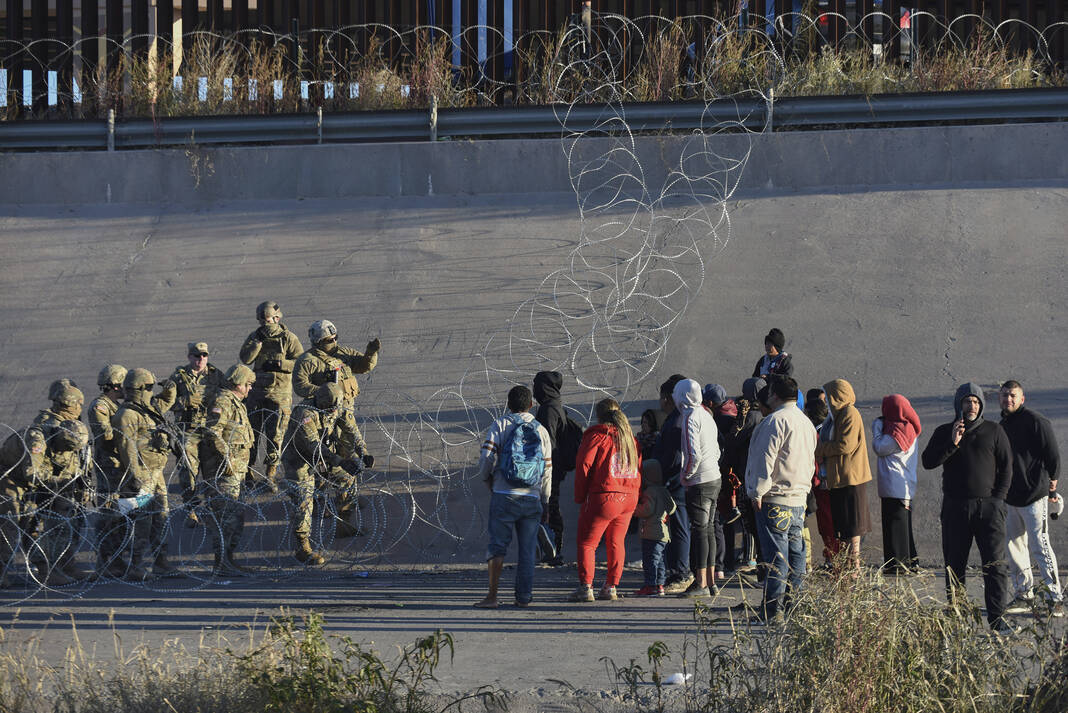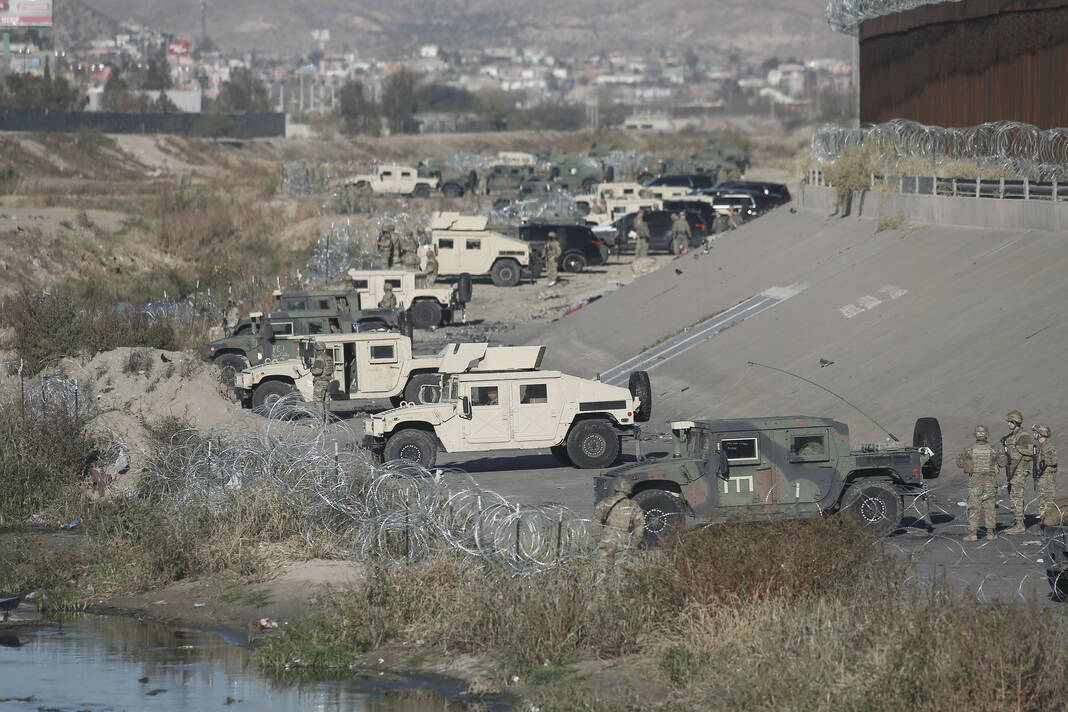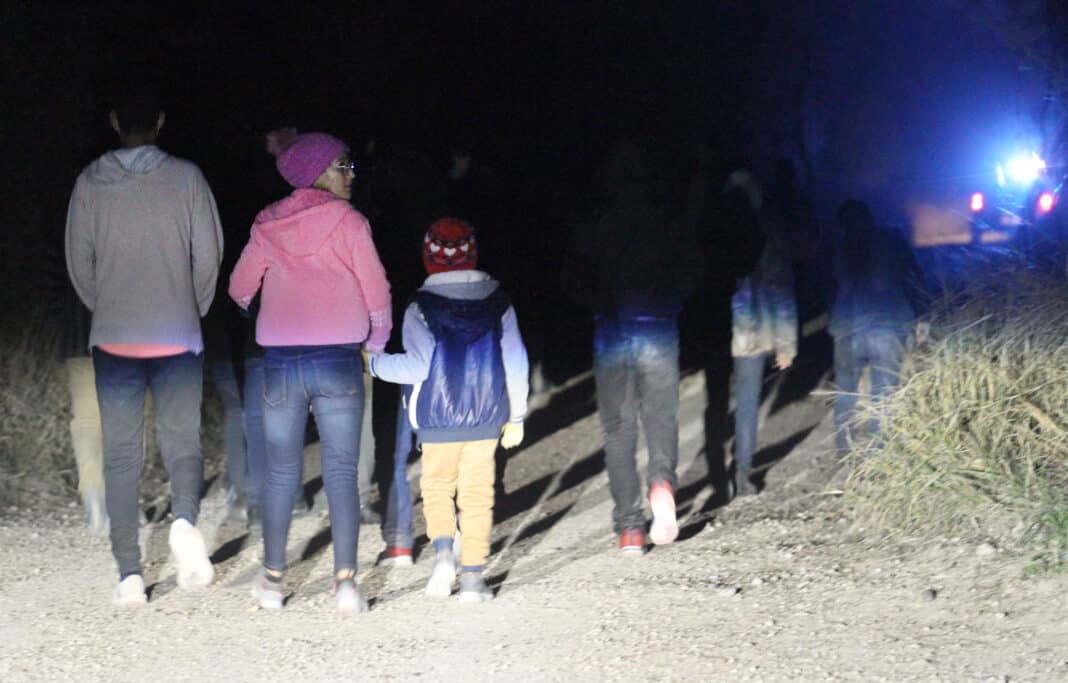Nearly 10,000 people are in Tamaulipas waiting to cross into the U.S. through Rio Grande Valley ports of entry when immigration procedures change in the coming days, according to information shared during a meeting held Tuesday between federal, state and local leaders.
Border Patrol hosted a stakeholder meeting in Weslaco on Tuesday morning to discuss plans for releasing immigrants into local communities should detention, processing and shelter space run out — a plan reported by The Monitor last week.
Border Patrol acknowledged the meeting in a news release Tuesday, noting that Rio Grande Valley Sector Chief Gloria I. Chavez discussed the current migration flow and challenges with attendees and also shared the agency’s current plans for any future increase in migration along the Rio Grande Valley.
“This type of transparency, pre-planning, and open lines of dialogue with community leaders, foster increased communication and coordination to be better prepared to manage any migration impact in our communities,” Chavez said in the statement.
The plans are forming in anticipation of the removal of Title 42, a public health policy leveraged during the pandemic to turn immigrants back to Mexico since March 2020. Since its temporary implementation, it’s been used over 2.4 million times, according to government data.

The public health policy was used to prevent immigrants from entering and seeking asylum into the U.S. during the global health crisis, but with improved pandemic conditions, the use of the policy became complicated to justify in federal courts.
After several court rulings, Title 42 was expected to end at midnight Wednesday, but the Supreme Court issued a stay on Monday keeping the policy in place. The federal government asked the Supreme Court to allow the termination of the policy but asked for a week’s extension to transition out of the policy by Dec. 27.
CBP is preparing to handle the increased number of people entering into the U.S.
“We have close to 10,000 migrants who are waiting in Mexico between Matamoros and Reynosa,” Monica de la Cruz, congresswoman-elect for District 15, said Tuesday afternoon. “The Rio Grande Valley area can host about 5,000 to 6,000, possibly. So, when Title 42 is lifted, this is going to produce great strain on our community and law enforcement officers.”
Across the border, according to a court filing from several GOP states, including Texas, “DHS estimated a similar increase from the imminent Title 42 termination, from 7,000 per day in illegal crossings to as much as 15,000 per day.”
“We have already started to gather all the different churches and parishes that are open to collectively respond to what may occur once Title 42 is lifted,” Sister Norma Pimentel, the executive director of Catholic Charities of the Rio Grande Valley, said Tuesday.

Pimentel created a network with other churches and nongovernmental organizations across the Rio Grande Valley since last year when their McAllen Respite Center closed its doors for two days after reaching maximum capacity. That network will help address the influx of crossings, she said.
Further, officials at the city of McAllen said they still have the outdoor Anzalduas shelter space open. Altogether, the shelters can accommodate about 3,000 people. But the outdoor space would have to be updated with heaters as the cold weather approaches, Ricardo Saldaña, the Hidalgo County emergency management coordinator who attended the meeting, said.
Saldaña also acknowledged Hidalgo County has seen large groups of migrants cross into the U.S. in the past, such as the humanitarian crisis from 2014 when unaccompanied children crossed in record numbers. The county improved its infrastructure to handle future challenges. Saldaña said one thing he has seen change in the current preparation was the federal government working in conjunction with the Mexican state of Tamaulipas to create a “smooth” process, he said Tuesday afternoon.
Not all government entities are as prepared, however. While cities like McAllen rely on FEMA funds to reimburse expenses, others are trying to work out the process.
“In this meeting, we even talked about the smaller municipalities that don’t have the infrastructure available to handle community releases,” de la Cruz added. Smaller cities like Rio Grande City participated, too.
Rio Grande City Mayor Joel Villarreal said the city plans to host the Border Patrol chief in its next meeting to discuss federal reimbursements because officials there expect to help with community releases in the coming days.
If federal agencies and nongovernmental organizations run out of room to receive immigrants released from federal custody, there are plans to release immigrants out in the community, but not without first notifying mayors, De la Cruz said.
“Our office is taking a leadership role in coordinating with the mayor, all the mayors, so we have an organized effort when this happens,” the newly-elected congresswoman said.





